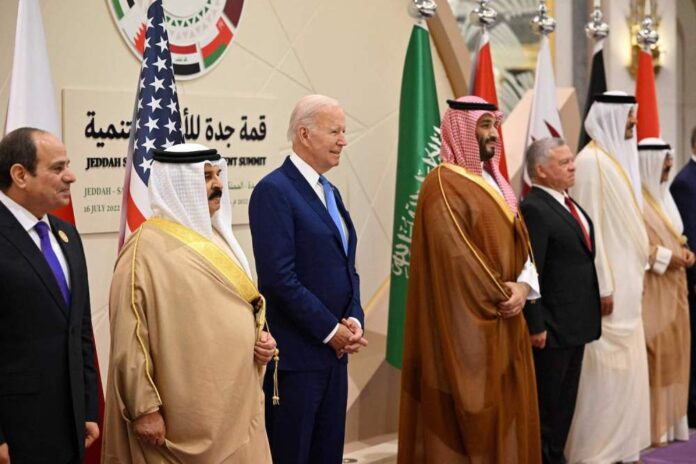Author: Maha Yahya
Affiliation: Director of the Carnegie Middle East Center
Organization/Publisher: Carnegie Middle East Center
Date/Place: March 2022/ Beirut, Lebanon
Type of Literature: Article
Word Count: 3006
Keywords: USA, Biden Administration, Middle East, Foreign Policy
Brief:
Maha Yahya discusses the US’ policy toward the Middle East during the Biden administration’s first year in power. She underlines the inherent contradictions of the US’ aims and objectives. The US policy objectives have been altered from broad aims of democratization and regional transformation to maintaining regional stability. Such stability has embraced two particular goals: a return to the Iran nuclear deal (the Joint Comprehensive Plan of Action, JCPOA) to prevent a regional arms race, and fighting terrorism in the region. Yahya argues that these objectives are being pursued in isolation of each other, which entails that the American policies will not manage to maintain regional stability and security. In other words, despite the interconnectivity between the US’ regional challenges, its policies are undermining each other. She explains that the US is in need of more cohesive policies and comprehensive strategy in the Middle East. Yahya tackles each of these objectives separately. Regarding regional stability, the American military’s disengagement from the Middle East has its negative effects due to the failure of the US to fill the vacuum it has left behind. Moreover, this results in the increasing of the proactivity of regional states in sustaining their security interests including the UAE, Turkey, and Iran increasing regional influence; this has created a more fragmented region instead of stability enhancement, and opened the way for major global powers such as Russia and China to increase their involvement in the region. For instance, the Abraham Accords that have intended to stabilize the prolonged Arab-Israeli conflict would push for alliances against Iran that could stimulate military actions in the region. In respect of the nuclear deal with Iran, Washington has “a dual challenge of engaging and containing Iran”. Yahya proclaims that whether there is an agreement or not on the nuclear deal, paradoxically regional stability is not guaranteed: in case of its failure an arms race is expected, or in the case of a deal the easing of sanctions translates into the flourishment of Iranian funding and military arms to its regional allies. Considering the Americans’ fight against extremists and terrorism, she maintains that dealing with terrorism from a security perspective is not enough; rather, an extensive solution that addresses the causes and motives that pave the way for the formation of extremist groups is needed. She calls for addressing terrorism with long-term solutions with consideration of regional dynamics as well as its causes, not only its symptoms. Yahya recommends specific policy directions for the US’ Middle East policy. First of all, she calls for integrated, cohesive, and consistent policies that match with each other. Moreover, these policies should follow two bases, which are filling the void created in the Middle East and providing new ideas to deal with regional disagreements. The first direction of the US policy is to cooperate with allies and rivals to draw the regional security architecture foundations. This architecture should give priority to a “collective regional position on Iran”, include an agreement on the Syrian situation, and provide a framework for multilateral cooperation and regional development. The second direction is to enhance regional dialogue initiatives. The third direction is developing new ideas to resolve regional conflicts that continue perpetuating. In conclusion, there is a significant need for the US to adopt a more cohesive policy toward the MENA region instead of proceeding on objectives and policies that challenge each other. The maintenance of regional stability requires not only addressing current discords but also predicting and resolving the consequences of them. Although Yahya stresses the shortcomings and contradictions of the US’ policy in the region and introduces valuable recommendations to be followed by the US, the article’s framework is US-centric with less consideration of other actors ’policies and interests in the region. Even if major global powers such as Russia and China would agree on the regional stability objective, the paradigm and the perception of such stability could be divergent. In this light, multilateralism in the region is not taken into consideration by Yahya’s analysis nor is it much welcomed.
By: Yomna Süleyman, CIGA Research Assistant




